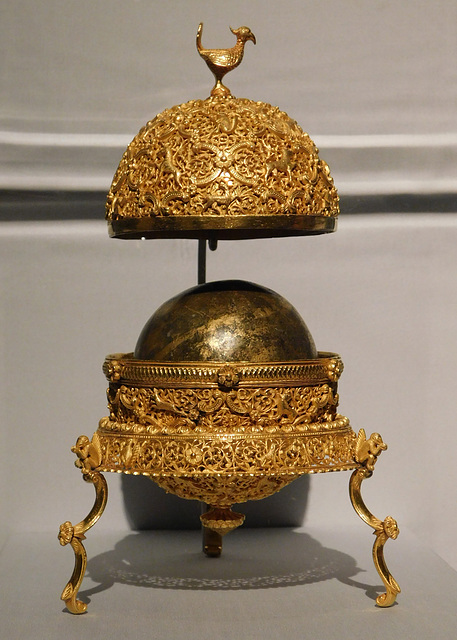The Cittern Player Automaton in the Metropolitan M…
The Cittern Player Automaton in the Metropolitan M…
The Cittern Player Automaton in the Metropolitan M…
Grave Monument of a Girl in the Getty Villa ,June…
Grave Monument of a Girl in the Getty Villa ,June…
Detail of a Grave Monument of a Girl in the Getty…
Detail of a Grave Monument of a Girl in the Getty…
South Italian Krater with a Procession in the Gett…
South Italian Krater with a Procession in the Gett…
Detail of a South Italian Krater with a Procession…
Detail of a South Italian Krater with a Procession…
Statuette of a Woman Feeding a Hen and Chicks in t…
Statuette of a Woman Feeding a Hen and Chicks in t…
Peep Show in an Inn by Alessandro Magnasco in the…
Peep Show in an Inn by Alessandro Magnasco in the…
Detail of Peep Show in an Inn by Alessandro Magnas…
Detail of Peep Show in an Inn by Alessandro Magnas…
The Tomb of Payava in the British Museum, May 2014
Fortuna-Isis Restored as Faustina the Younger as C…
Fortuna-Isis Restored as Faustina the Younger as C…
Detail of Fortuna-Isis Restored as Faustina the Yo…
Detail of Fortuna-Isis Restored as Faustina the Yo…
Detail of Fortuna-Isis Restored as Faustina the Yo…
Goa Stone and Case in the Metropolitan Museum of A…
Heart-Shaped Flask in the Metropolitan Museum of A…
Heart-Shaped Flask in the Metropolitan Museum of A…
Alchemical Table Bell of Rudolf II in the Metropol…
Alchemical Table Bell of Rudolf II in the Metropol…
Alchemical Table Bell of Rudolf II in the Metropol…
Tankard from Bohemia in the Metropolitan Museum of…
Tankard from Bohemia in the Metropolitan Museum of…
Celestial Globe with Clockwork in the Metropolitan…
Celestial Globe with Clockwork in the Metropolitan…
Detail of The Ogling Man by Watteau in the Virgini…
Detail of The Ogling Man by Watteau in the Virgini…
The Ogling Man by Watteau in the Virginia Museum o…
The Ogling Man by Watteau in the Virginia Museum o…
Gluttony by Paul Cadmus in the Metropolitan Museum…
Gluttony by Paul Cadmus in the Metropolitan Museum…
Detail of Gluttony by Paul Cadmus in the Metropoli…
Detail of Gluttony by Paul Cadmus in the Metropoli…
Detail of Gluttony by Paul Cadmus in the Metropoli…
Sloth by Paul Cadmus in the Metropolitan Museum of…
Sloth by Paul Cadmus in the Metropolitan Museum of…
Detail of Sloth by Paul Cadmus in the Metropolitan…
Keywords
Authorizations, license
-
Visible by: Everyone -
All rights reserved
-
253 visits
Goa Stone and Case in the Metropolitan Museum of Art, February 2020


Goa Stone and Gold Case
late 17th–early 18th century
Object Details
Title: Goa Stone and Gold Case
Date: late 17th–early 18th century
Geography: Probably made in India, Goa
Medium: Container: gold; pierced, repoussé, with cast legs and finials
Goa stone: compound of organic and inorganic materials
Dimensions: Goa stone: Diam. 1 3/16 in. (3 cm)
container: H. 2 5/8 in. (6.7 cm)
Diam. 5 11/16 in. (14.4 cm)
Classification: Metal
Credit Line: Rogers Fund, 2004
Accession Number: 2004.244a–d
Bezoar stones—gallstones naturally formed in the intestines of ruminant mammals—came to Europe through trade along the Silk Road and with the East and West Indies in the sixteenth century. Believed to counteract poisons, they quickly became valued Kunstkammer items. This Goa stone is an artificial bezoar, likely composed of a paste of bezoar, clay, silt, crushed shell, amber, musk, resin, narwhal tusk, and crushed gemstones. Named for the region in India where they were manufactured by Jesuits, Goa stones were considered just as effective as their natural counterparts.
Text from: www.metmuseum.org/art/collection/search/454738
late 17th–early 18th century
Object Details
Title: Goa Stone and Gold Case
Date: late 17th–early 18th century
Geography: Probably made in India, Goa
Medium: Container: gold; pierced, repoussé, with cast legs and finials
Goa stone: compound of organic and inorganic materials
Dimensions: Goa stone: Diam. 1 3/16 in. (3 cm)
container: H. 2 5/8 in. (6.7 cm)
Diam. 5 11/16 in. (14.4 cm)
Classification: Metal
Credit Line: Rogers Fund, 2004
Accession Number: 2004.244a–d
Bezoar stones—gallstones naturally formed in the intestines of ruminant mammals—came to Europe through trade along the Silk Road and with the East and West Indies in the sixteenth century. Believed to counteract poisons, they quickly became valued Kunstkammer items. This Goa stone is an artificial bezoar, likely composed of a paste of bezoar, clay, silt, crushed shell, amber, musk, resin, narwhal tusk, and crushed gemstones. Named for the region in India where they were manufactured by Jesuits, Goa stones were considered just as effective as their natural counterparts.
Text from: www.metmuseum.org/art/collection/search/454738
- Keyboard shortcuts:
Jump to top
RSS feed- Latest comments - Subscribe to the comment feeds of this photo
- ipernity © 2007-2025
- Help & Contact
|
Club news
|
About ipernity
|
History |
ipernity Club & Prices |
Guide of good conduct
Donate | Group guidelines | Privacy policy | Terms of use | Statutes | In memoria -
Facebook
Twitter

Sign-in to write a comment.